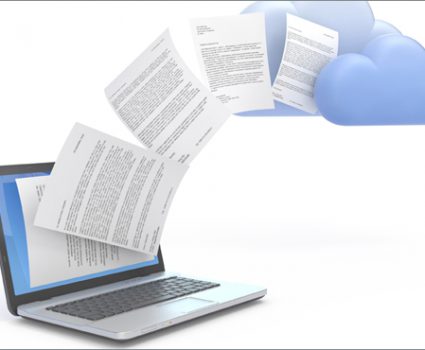
Five keys to success when making the move to electronic records
Whether you are imaging paper documents or adopting an electronic content solution, “going electronic” requires careful planning.
Organizations don’t publish statistics of this sort, but in our experience, somewhere around 50 percent of all imaging projects fail.
And the failure rate when implementing electronic content management systems? It’s just as bad.
A five-point checklist for success
The following best practices will help ensure that your project doesn’t become another unhappy statistic. These tips apply equally well whether you are looking at document imaging, implementing an ECM system, or adopting a new line-of-business software solution.
- Understand your business drivers
Organizations need to start the move to electronic by answering the question: “Why are we doing this in the first place?”Some of the common reasons include: cost savings, compliance, and greater efficiency of information access and storage.Whatever your business drivers, it is critical that they are clearly defined and understood before the project begins. A set of explicit goals helps guide decisions throughout the project and ensures that you achieve the desired outcomes. - Don’t get distracted by technology
With all conversion projects, there is a natural tendency to focus on technology as THE solution. While selecting the right technology is important, focusing solely on tech can be detrimental to your project, for the simple reason that technology isn’t a silver bullet.The key to achieving your goals is having the right technology – properly applied – with the right people and processes to go alongside it. - Build a solid records management foundation
Good records management practices help you manage records regardless of their format. The fundamentals include a records classification scheme, an up-to-date retention schedule and the polices and procedures that help brings these to life.If these basic ingredients aren’t in place, the move to electronic records is far more likely to fail. We recommend reviewing your current records management practices and addressing all gaps before the conversion takes place. - Change management: Keep your staff needs in mind
Staff members will have a huge role to play in a successful move to electronic records. To help them adapt, your change management program will have to recognize and address some potentially wide-ranging changes, such as:
- new business processes
- new software systems and user interfaces
- new workflows and operational setups
- new records management policies
Ensure that staff are consulted along the way and that their input and needs are considered as you introduce the changes.
- Set realistic expectations
Unless you manage expectations carefully, you are bound to encounter erroneous or unrealistic expectations about the move to electronic records. The most common of these is the idea that moving to electronic records will create a completely paperless environment. Far more likely is that you’ll end up with a hybrid environment of paper and electronic records. And this is not a bad thing, provided it is managed well. Another unrealistic expectation that we often see relates to resource and budgetary requirements. Unfortunately, managers creating conversion plans often have little experience with these kinds of projects, which can lead to significant underestimation of the costs and labor required.To help you set the right expectations it helps to consult with colleagues or an experienced provider such as TAB. When you understand the realities and know what to expect, you are better prepared to see the project through and view it as a success once it has been completed.





